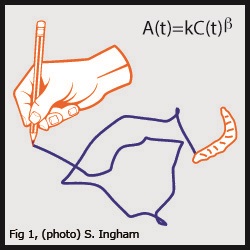Lines of investigation
The behavior of animals is not the behavior of their brains, but the processes emerging from the interaction between neural activity, body biomechanics and environmental constraints. Recent advances in neuroscience comprise a wide range of “big tools” enabling the collection of “big data”, both being promissory notes for understanding the brain and explaining behavior. This has lead to much emphasis on techniques and causal accounts of explanation in the flavour of the latest interventionist techniques and reductionist views, thus giving the impression that detailed studies of behavior and its algorithmic composition are less important. However, dissecting “necessary and sufficient” neural circuits for behavior is no shortcut to the proper study of behavior itself. After all, to ask how the brain works is different than (and requires) to ask what it is for — neurons indeed compute information yet nervous systems evolved to produce adaptive behavior. Thus, in the lab we try to avoid missing the forest for the trees.
We advocate for a more pluralistic notion of neuroscience where the dissection of neural processors (“hardware explanations”) are best investigated after a careful decomposition of behavioral processes (“software explanations”). This has lead us to pursue a theoretical/computational approach to animal behavior, and across species. From worms and flies to mice and humans, we study shared principles of animal movement from which the fundamental properties of these complex systems should be derivable, interpretable and explainable. Our current efforts target three fronts: (i) seeking the perceptual origins of the speed-curvature power-law in human drawing and maggot locomotion, (ii) exploring the organization of posture sequences in foraging worms and fish, and (iii) establishing behavioral homologies in the unfolding of locomotor degrees of freedom in flies and rodents.
We are hopeful that searching for principles of animal behavior across species will offer general insights into the neurobiology, ecology and evolution of animal behavior. Seeking to fulfill the promise of nowadays “big science”, our more abstract complementary approach moves towards a grounded integrative grasp of animal behavior. Quoting Woese, “without the proper technological advances the road ahead is blocked, without a guiding vision there is no road ahead”.
Representative Publications
- Neuroscience Needs Behavior: Correcting a Reductionist Bias Krakauer JW, Ghazanfar AA, Gomez-Marin A, MacIver MA, Poeppel D Neuron 2017 93(3):480 https://doi.org/10.1016/j.neuron.2016.12.041
- Generative rules of Drosophila locomotor behavior as a candidate homology across phyla Gomez-Marin A, Oron E, Gakamsky A, Dan Valente, Benjamini Y, Golani I Sci Rep 2016 6:27555 https://doi.org/10.1038/srep27555
- Dynamical feature extraction at the sensory periphery guides chemotaxis. Aljoscha Schulze* , Alex Gomez-Marin*, Vani G Rajendran, Gus Lott, Marco Musy, Parvez Ahammad, Ajinkya Deogade, James Sharpe, Julia Riedl, David Jarriault, Eric T Trautman, Christopher Werner, Madhusudhan Venkadesan, Shaul Druckmann, Vivek Jayaraman, Matthieu Loui eLife 2015 4:e06694 https://doi.org/10.7554/eLife.06694
- Big behavioral data: psychology, ethology and the foundations of neuroscience Alex Gomez-Marin , Joe J. Paton, Adam R. Kampff, Rui M. Costa & Zachary M. Mainen Nat Neurosci 2014 17(11):1455-62 https://doi.org/10.1038/nn.3812
- Active sampling and decision making in Drosophila chemotaxis Alex Gomez-Marin , Greg J. Stephens & Matthieu Louis Nat Commun 2011 0,3895833333 https://doi.org/10.1038/ncomms1455
- Transcending reductionism in neuroscience The Entangled Brain Luiz Pessoa MIT Press, 2022. 280 pp. Gomez-Marin, A. Science 2022 378(6620): 606 https://doi.org/10.1126/science.ade8689
- The motor Wisdom of the Crowd Madirolas, G., Zaghi-Lara, R., Gomez-Marin, A., Pérez-Escudero, A. J R Soc Interface. 2022 19 (195): art. 20220480 https://doi.org/10.1098/rsif.2022.0480
- Making life and mind as clear as possible, but not clearer. Gomez-Marin, A. Behav Brain Sci . 2022 45: e196 https://doi.org/10.1017/S0140525X22000127
- Editorial: Emergent Behavior in Animal-Inspired Robotics. Gomez-Marin, A., Zhang, Y. Front Neurorobot . 2022 16: art. 861831 https://doi.org/10.3389/fnbot.2022.861831
- A virtual library for behavioral performance in standard conditions-rodent spontaneous activity in an open field during repeated testing and after treatment with drugs or brain lesions. Szechtman, H., Dvorkin-Gheva, A., Gomez-Marin, A. Gigascience. 2022 11: giac092 https://doi.org/10.1093/gigascience/giac092
- An exploration of real, virtual, and possible minds The Book of Minds Philip Ball University of Chicago Press, 2022. 512 pp. Gomez-Marin A. Science. 2022 377 (6603): 268 https://doi.org/10.1126/science.abq6975
- The Brain in Search of Itself: Santiago Ramon y Cajal and the Story of the Neuron Gomez-Marin A. Science. 2022 375 (6586): 1237 - Book Review https://doi.org/10.1126/science.abo0190
- Facing biology’s open questions Rupert Sheldrake’s heretical hypothesis turns 40 Gomez-Marin A Bioassays 2021 43(6):e2100055 https://doi.org/10.1002/bies.202100055
- Feeling and Knowing: Making Minds Conscious Gomez-Marin A Science 2021 374(6568):696 https://doi.org/10.1126/science.abm6378
- Hierarchical Control of Visually-Guided Movements in a 3D-Printed Robot Arm Matić A, Valerjev P, Gomez-Marin A Front Neurorobot 2021 15:755723 https://doi.org/10.3389/fnbot.2021.755723
- Promisomics and the Short-Circuiting of Mind Gomez-Marin A eNeuro 2021 8(2):ENEURO.0521-20.2021 https://doi.org/10.1523/ENEURO.0521-20.2021
- The Brain from Inside Out Gomez-Marin A Curr Biol 2021 31(5):R221 https://doi.org/10.1016/j.cub.2021.01.101
- When the Part Mirrors the Whole: Interactions Beyond Simple Location Gomez-Marin A, Arnau J Front Psychol 2021 11:523885 https://doi.org/10.3389/fpsyg.2020.523885
- Deleuze’s Bergsonism Gomez-Marin A Theory Cult Soc 2020 37(7-8):435 https://doi.org/10.1177/0263276420958461
- Geometric purity, kinematic scaling and dynamic optimality in drawing movements beyond ellipses Matic A, Gomez-Marin A J Math Psychol 2020 99:102453 https://doi.org/10.1016/j.jmp.2020.102453
- Long-term memory of real-world episodes is independent of recency effects: magic tricks as ecological tasks Bestue D, Martínez LM, Gomez-Marin A, Gea MA, Camí J Heliyon 2020 6(10):e05260 https://doi.org/10.1016/j.heliyon.2020.e05260
- On the cognitive bases of illusionism Cami J, Gomez-Marin A, Martinez LM PeerJ 2020 8:e9712 https://doi.org/10.7717/peerj.9712
- The Case Against Reality: Why Evolution Hid the Truth from Our Eyes Gomez-Marin A Constr Found 2020 16(1):124
- The Idea of the Brain: The Past and Future of Neuroscience Gomez-Marin A Science 2020 368(6489):375 https://doi.org/10.1126/science.abc0421
- A clash of Umwelts: Anthropomorphism in behavioral neuroscience Gomez-Marin A Nat Commun 2019 42:e229 https://doi.org/10.1017/S0140525X19001237
- A customizable tablet app for hand movement research outside the lab Matic A, Gomez-Marin A Journal of Neurosci Methods 2019 328:108398 https://doi.org/10.1016/j.jneumeth.2019.108398
- The Life of Behavior Gomez-Marin A, Ghazanfar AA Neuron 2019 104(1):25 https://doi.org/10.1016/j.neuron.2019.09.017
- Reproducibility and replicability of rodent phenotyping in preclinical studies Kafkafi N, Agassi J, Chesler EJ, Crabbe JC, Crusio WE, Eilam D, Gerlai R, Golani I, Gomez-Marin A, Heller R, Iraqi F, Jaljuli I, Karp NA, Morgan H, Nicholson G, Pfaff DW, Richter SH, Stark PB, Stiedl O, Stodden V, Tarantino LM, Tucci V, Valdar W, Williams RW, Würbel H, Benjamini Y Neurosci Biobehav Rev 2018 87:218 https://doi.org/10.1016/j.neubiorev.2018.01.003
- The speed-curvature power law of movements: a reappraisal Zago M, Matic A, Flash T, Gomez-Marin A, Lacquaniti F Exp Brain Res 2018 236(1):69 https://doi.org/10.1007/s00221-017-5108-z
- Lateral Thalamic Eminence: A Novel Origin for mGluR1/Lot Cells Ruiz-Reig N, Andres B, Huilgol D, Grove EA, Tissir F, Tole S, Theil T, Herrera E, Fairen A Cereb Cortex 2017 27(5):2841 https://doi.org/10.1093/cercor/bhw126
- Neuroscience Needs Behavior: Correcting a Reductionist Bias Krakauer JW, Ghazanfar AA, Gomez-Marin A, MacIver MA, Poeppel D Neuron 2017 93(3):480 https://doi.org/10.1016/j.neuron.2016.12.041
- Expanding perspectives on cognition in humans, animals, and machines Gomez-Marin A, Mainen ZF Curr Opin Neurobiol 2016 37:85 https://doi.org/10.1016/j.conb.2016.01.011
- Generative rules of Drosophila locomotor behavior as a candidate homology across phyla Gomez-Marin A, Oron E, Gakamsky A, Dan Valente, Benjamini Y, Golani I Sci Rep 2016 6:27555 https://doi.org/10.1038/srep27555
- Hierarchical compression of Caenorhabditis elegans locomotion reveals phenotypic differences in the organization of behaviour Gomez-Marin A, Stephens GJ, Brown AE J R Soc Interface 2016 13(121):20160466 https://doi.org/10.1098/rsif.2016.0466
- Mitochondrial targeting of XJB-5-131 attenuates or improves pathophysiology in HdhQ150 animals with well-developed disease phenotypes Polyzos A, Holt A, Brown C, Cosme C, Wipf P, Gomez-Marin A, Castro MR, Ayala-Peña S, McMurray CT Hum Mol Genet 2016 25(9):1792 https://doi.org/10.1093/hmg/ddw051
- The speed – curvature power law in Drosophila larval locomotion Zago M, Lacquaniti F, Gomez-Marin A Biol Lett 2016 12(10):20160597 https://doi.org/10.1098/rsbl.2016.0597
- Dynamical feature extraction at the sensory periphery guides chemotaxis. Aljoscha Schulze* , Alex Gomez-Marin*, Vani G Rajendran, Gus Lott, Marco Musy, Parvez Ahammad, Ajinkya Deogade, James Sharpe, Julia Riedl, David Jarriault, Eric T Trautman, Christopher Werner, Madhusudhan Venkadesan, Shaul Druckmann, Vivek Jayaraman, Matthieu Loui eLife 2015 4:e06694 https://doi.org/10.7554/eLife.06694
- Big behavioral data: psychology, ethology and the foundations of neuroscience Alex Gomez-Marin , Joe J. Paton, Adam R. Kampff, Rui M. Costa & Zachary M. Mainen Nat Neurosci 2014 17(11):1455-62 https://doi.org/10.1038/nn.3812
- Active sampling and decision making in Drosophila chemotaxis Alex Gomez-Marin , Greg J. Stephens & Matthieu Louis Nat Commun 2011 0,3895833333 https://doi.org/10.1038/ncomms1455

 Español
Español

